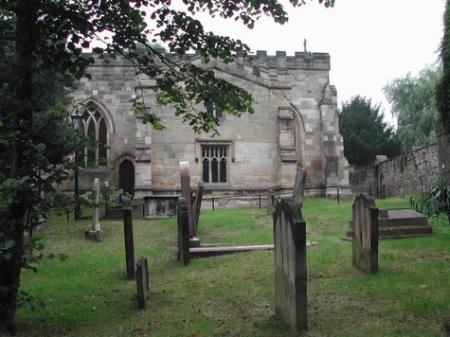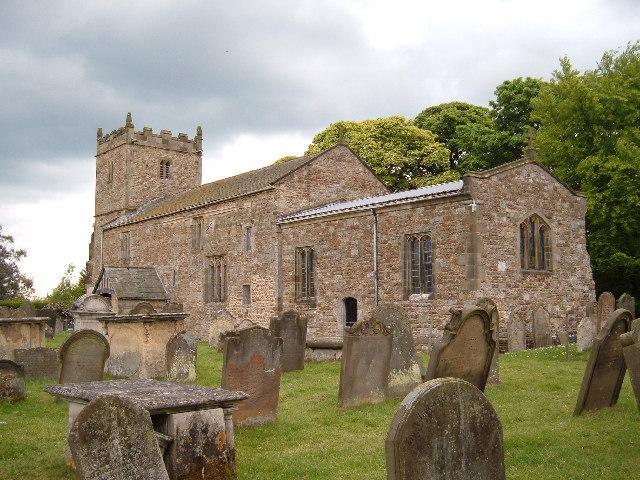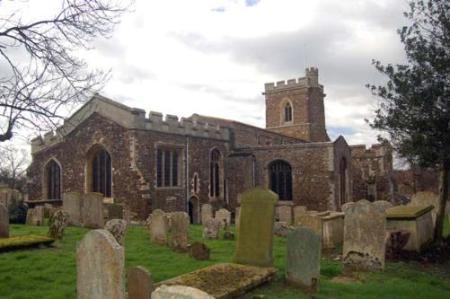English Heritage graveyard survey project
In 2013 a evaluated at a national level the interest in, demand for, and operational implications of widespread support for local groups to carry out digital recording of graveyards, and the deposition of the information in a secure format for management, local history and academic use. I am involved in a collaborative project DEBS - Discovering England's Burial Spaces that develops some of the recommendations of the 2013 project. The Liverpool component builds on Harold Mytum’s research expertise in this field and revises advice and protocols for recording and analysing graveyard and cemetery monuments.

Developing Local Assessment Toolkits
This is a scoping study to look at developing a standard model for recording cemeteries and burial grounds
Cemeteries, churchyards, burial grounds, monuments, memorials and conservation are all integral to the work of English Heritage. This project consists of an initial scoping study of existing recording programmes to:
- assess their current status and operation
- maximise the conservation benefit to be gained from existing records
- inform English Heritage in national decision-making.
The project also provides advice and recommendations on the development of a Heritage Lottery Fund digital project bid for a national toolkit and web-based database for volunteers.
This will provide a framework to encourage, enthuse, and enable local communities to contribute to asset-recording fieldwork by objectively recording the current state of burial monuments and sites (and components including gates, walls, vegetation) at an appropriate and realistic level, with the data housed in a stable and accessible manner.
Aim
Our goal is to objectively capture the current state of monuments and cemeteries at an appropriate and realistic level of recording individual objects.
Yorkshire graveyard survey: Memory, commemoration and the country house estate
A wide-ranging continues to create an important collection of graveyard surveys, together with landscapes of commemoration associated with some country house estates including Castle Howard and Sledmere. These surveys were started with the involvement of students from the University of York, but work continues both in surveying additional sites and analysis of the expanding data base.
Methods
A sample of Yorkshire graveyards are to be investigated to understand how they have developed, and to identify the changes in monument types, materials, decoration and form of text over time. As such they are fine examples of rural graveyards where the material remains can also be compared with patterns of burial recorded in the parish burial registers.

Initial surveys concentrated on two churchyards near to Castle Howard, a few miles north-east of York. The small, picturesque village of Bulmer has a beautiful small medieval church and an interesting graveyard. This is grazed some of the time by sheep to keep the grass down, and contains a variety of later 18th, 19th and 20th century memorials. The graveyard has been extended over time. There are a few internal memorials on the walls and on the floor of the chancel. Welburn was part of Bulmer parish until during the 19th century when it gained its own church and churchyard. Before then, the residents of Welburn were buried at Bulmer, and we have recorded many gravestones which state that the deceased was of Welburn. Therefore, the combination of the two sites showed the pattern of commemoration in the same block of land (originally one parish but now two) from the 18th century to the present day.
The research examined the ways in which families on the Castle Howard estate were influenced by the country house when creating memorials in the landscape. Some, like the Howard family mausoleum at Castle Howard, are away from the church on private estates, others such as village war memorials may be in public places, and many others may be in the church or churchyard. The graveyards can throw light on the nature, extent and chronology of patronage and independent identity. Some of the memorials to villagers were paid for by the landowners, but most were not. A detailed study will show how affiliation and patronage was used in the villages and throw light on the relationships between village, estate and house.
Some recording work has also been undertaken at Heslington church, another example of a churchyard with high status graves (owners of Heslington Hall), their estate workers and other inhabitants.
Regional level
Within North Yorkshire, Kellington, Riccal, Escrick and Sheriff Hutton have been studied as well as Bulmer and Welburn, and much of the graveyard in the market town of Easingwold has been recorded. Further selective recording in burial grounds in and around Helmsley has allowed regional trends to be identified, and the 2019 Kirkdale Lecture (to be published in the Kirkdale lecture monograph series in due course) places the regional traditions against the national and international commemoration boom and transformations of monumental forms and motifs. This is one of the largest regional collections of archaeologically collected gravestone data in Britain, and it will continue to grow each year.
An important 17th- and early 18th-century regional style has been identified in West Yorkshire. So far the only work on these memorials has been by Peter Brears, who has written 'Heart gravestones in the Calder valley' in Folk Life 19, 84-93.The first planned site is St Mary in the Wood, Morley, West Yorkshire. Here the important use of hearts and cherubs as major motifs can be studied. There are also elaborate initial letters, a feature also noted nearer to York. We will thus investigate the earlier phases of graveyard memorial design, the development of motifs and scripts, and through supplementary documentary research, discover what social classes innovated with this method of churchyard commemoration. Thus questions about the social context of gravestone change, the changing meanings of symbols will be investigated.
Conclusions
This research programme continues to make significant contributions to current debates in historical archaeology, particularly on the the changing role of material culture in an increasingly consumerist culture, and in the study of individual and group identity. It forms part of a larger research programme examining mortuary behaviour in the historic period.
Links
- York Cemetery has been subject to several research and conservation programmes and provides useful urban comparative data for the surveys undertaken in this project.
Publications
- H Mytum 2007 'Monuments and Memory in the Estate Landscape: Castle Howard and Sledmere'. In: J Finch and K Giles ed(s). Estate Landscapes: Design, Improvement and Power in the Post-Medieval Landscape, 149-174. Woodbridge, Boydell & Brewer, Society for Post-Medieval Archaeology
- H Mytum 2006 'Popular attitudes to memory, the body, and social identity: the rise of external commemoration in Britain, Ireland, and New England'. Post-medieval Archaeology 40,1, 96-110
- H Mytum 2004 Monuments and Burial Grounds of the Historic Period. Kluwer Academic/Plenum, New York
- H Mytum 2000 Recording and Analysing Graveyards. York, Council for British Archaeology Practical Handbooks in Archaeology 15
- H Mytum 1996 'Intrasite Patterning and the Temporal Dimension using GIS: the example of Kellington Churchyard'. Annalecta Praehistoria Leidensia 28, 363-367.
Potton graveyard and early mortality symbols
Bedfordshire offers unique opportunities for studying early modern memorials, and includes a significant number with mortality symbols, later replaced by cherubs and urns.
Unlike Scotland, Ireland or New England, few external burial grounds in England have produced monuments with mortality symbols in profusion. Where these do occur, many are carved on stones that have weathered so that the inscriptions are hard to read. The Potton cemetery in Bedfordshire is important as a graveyard where skilfully carved headstones with mortality symbols survive along with the inscriptions.

Approach
Although some of the early stones have been moved from their original positions, an archaeological approach can augment the work already undertaken by local history groups on the inscriptions and layout of the graveyard. Particular attention has been paid to the symbolism on the headstones and the stylistic details employed on these monuments.
Specific questions asked at Potton were:
- What was the chronology of external memorial at Potton?
- When did the use of mortality symbols begin and end, and why?
- Which aspects of the deceased's identities were emphasised on the memorial?
- To what extent can the death's head, cherub, urn and willow model of New England gravestone change be applied at Potton?
Fieldwork
Fieldwork took place during Summer 2005, concentrating on the earliest headstones in the area, and publication in the journal Church Archaeology. Further recording took place at Potton and data entry and analysis followed in 2006. Specific interpretations relating to this community will be drawn from the work, but the study also forms part of a larger research programme examining mortuary behaviour in the historic period, which has been approached on various geographical and temporal scales:
- Yorkshire (see above where some mortality symbols are used on the earliest grave slabs)
- (where there is a particular emphasis on mortality symbols in west Ulster).
Publications
- H Mytum and K Chapman 2006 'The origin of the graveyard headstone: some 17th-century examples in Bedfordshire'. Church Archaeology 7-9, 67-78
- H Mytum 2006 'Popular attitudes to memory, the body, and social identity: the rise of external commemoration in Britain, Ireland, and New England'. Post-medieval Archaeology 40,1, 96-110
- H Mytum 2004 Mortuary Monuments and Burial Grounds of the Historic Period. Kluwer Academic/Plenum, New York.
Sponsors
These projects have been sponsored by:
- University of York
- English Heritage
- University of Liverpool.
Contribute
If you would like to let our Project Team know of ongoing graveyard recording projects, or recordings recently completed throughout the British Isles or Ireland, please contact .